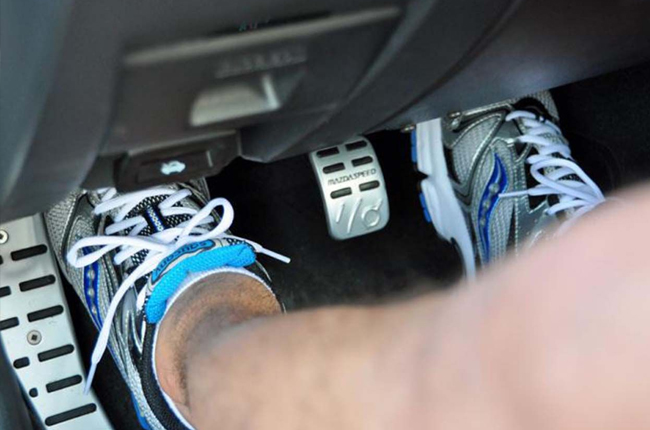
Jump-starting your car isn’t an easy feat. If not done correctly, it could lead to destroying your car’s gearbox which will cost you a lot. Since you don't know when your car will suddenly not start, it’s better to be prepared when that time comes. Aside from having your jumper cables, you’ll also need to know the right procedure in jump-starting your vehicle. This could happen anytime and unexpectedly, and your car could eventually die at some point if it’s been on the road for years.
Take note, though, that this process will only work for vehicles equipped with a manual transmission. If you attempt to jump-start an automatic, it could result in completely destroying the transmission system as it’ll be hard to match the speed with its gear just by pushing. So without further ado, here’s how you can jump-start your car.
Clear the area

Make sure that the coast is clear. Your car would need 50 to 100 meters of runway for the jump-start to be successful. The area should be safe from unsuspecting obstacles or people. Plus, jump-starting on a downhill slope is easier but not recommended as you might lose control of the vehicle.
Get into position

Get in your normal driving position. Turn your keys on, push on the clutch pedal, and engage in 2nd gear. Features that use electricity such as air conditioning, radio, and lights should be turned off as you will need all the power from your batteries.
Take note that you should be in 2nd gear and not in 1st as you will need momentum and speed in order for the car to jump-start—which is about 30 to 40 km/h. The speed of your car should match the gear.
Have someone push the car

You need to have someone push the car for you. Jump-starting alone isn’t recommended—no matter how good you are at jumping inside a moving vehicle. If you’re alone, you could call a friend or find someone around that you could ask for help from. Just remember to ask politely so they’ll be convinced to offer you a helping hand.
Release the clutch

While the car is running, release the clutch, step on the gas lightly, and celebrate as your car goes alive—just kidding. Concentrate on the road and maneuver cautiously, then park your vehicle without turning off your engine.
Don’t forget to have a professional check why your car didn’t start. There might be a problem with your ignition, spark plugs, or batteries. Just follow these steps and you won’t be needing a towing truck to carry your vehicle at drastic times like this. Do take note that it’s best to have your tools and other equipment inside your vehicle including the jumper cables in order to be prepared for any unexpected situations. Also, proper maintenance is one of those keys to avoiding car problems like this, always make sure to follow its periodic maintenance service (PMS) schedules to maintain the pristine condition of your vehicle.
Latest Features
-
An all-electric future: The Porsche Macan Electric / Featured Article
Porsche’s Macan goes all-electric; it’s a new beast with an electrified heart, yet unmistakably Porsche in performance and spirit.
-
Which Kia should I buy? / Featured Article
We’re here to help you decide which Kia vehicle is best for you, whether it’s a sedan, crossover, or minivan.
-
Why Lynk & Co is a good option for luxury car buyers / Featured Article
Lynk & Co offers premium value for those exploring the luxury market.
Popular Articles
-
Electric Vehicles in the Philippines for under P1 million
Jerome Tresvalles · Aug 19, 2025
-
Top 3 Cars For Every Lifestyle—What Cars Are Right For You? | Behind a Desk
Caco Tirona · Apr 24, 2024
-
5 Tips to Maximize Fuel Efficiency
Jerome Tresvalles · Sep 09, 2024
-
Five driving habits that are draining your fuel tank
Jerome Tresvalles · Jun 24, 2025
-
Can engine braking harm your engine?
Jerome Tresvalles · Sep 11, 2025
-
Do electric cars even need maintenance?
Jerome Tresvalles · Oct 23, 2024
-
Best vehicles for an active outdoor lifestyle
Shaynah Miranda · Jul 25, 2024
-
How to drive different types of vehicle transmissions
May 23, 2024
-
5 easy ways to keep your car interior clean
Allysa Mae Zulueta · Nov 15, 2021
-
How to survive Metro Manila traffic
Earl Lee · Aug 16, 2022



